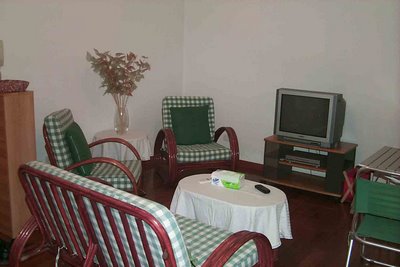Chengdu's Intangible Cultural Heritage
The November 26th Chengdu Weekly's lead article highlighted the Chengdu Municipal Culture Bureau's announcement of a new Chengdu Intangible Cultural Heritage List with 41 items in nine areas involving literature, music, dance and quyi (Chinese folk art forms). Mr. Chen Lizhi, Municipal Culture Bureau Chief, said "With distinctive local characteristics, all of the items are important representatives of the local folk art culture and tradition, or of great value and significance to the research and development of local history, art, ethnology, folklore, sociology, anthropology and literature." Many of the items are on the verge of extinction and effective measures need to be taken to preserve and protect them.
The nine areas and 41 specific items are:
- Folklore: (a) Xinjin Riddles Written on Lanterns.
- Folk Music: (a) Tuojiang Haozi*, (b) Zhuma Haozi*, (c) Spring Festival Gong and Drum Dance, (d) Qingcheng Dongjing Ancient Music, and (e) Chengdu Taoist Music. [*Haozi is a work song sung by boat trackers to synchronize movements with one person leading.]
- Folk Dance: (a) Fire Dragon Dance.
- Traditional Drama: (a) Chengdu Puppet Show and (b) Chengdu Shadow Play.
- Quyi: (a) Daoqing - chanting folk tales to the accompament of simple percussion instruments, (b) Heyi - a Sichuan folk art form, (c) Sichuan Qingyin - arias sung without makeup or musical accompaniment, (d) Jinqianban - ballad-singing to the accompaniment of three-inch bamboo pieces which make a metallic sound when beaten together, (e) Yangqin - dulcimer, (f) Lianxiao - a Sichuan folk art form, (g) Feidao Drum Dance, and (h) Yaomei Huadeng Opera.
- Acrobatics and Athletics: (a) Gaotai Lion Dance.
- Traditional Handicrafts: (a) Caramel Painting, (b) Shuijingfang Wine-brewing Technique, (c) Processing Skills of Pixian Broad-bean Sauce, (d) Sichuan-style Bonsai Making Skill, (e) Coil-binding Skill of Sichuan Bonsai, (f) Making Skill of Kongming Lantern - an early type of hot air balloon used for military signaling, (g) Woven Bamboo Ware with Porcelain Body, (h) Qionglai Porcelain, (i) Guihua Pottery, (j) Straw-woven Ware, (k) Chengdu Silve Filigree Skill, (l) Handicraft with Palm Fibre, (m) Rattan-woven Ware, (n) Daoming Bamboo-woven Ware, (o) Skills for Producing Costumes and Accessories for Sichuan Opera, (p) Chengdu Lacquer Art, (q) Weaving Skills of Sichuan Brocade, and (r) Skills of Sichuan Embroidery.
- Traditional Chinese Medicine: (a) Chengdu's Local Processing Skills of TCM and (b) Local Processing Skills of Traditional Herbs.
- Folk Customs: (a) Dujiangyan Water Releasing Festival, (b) Wangcong Folk Song Competition, and (c) Xinjin Huoniuzhen.



















































